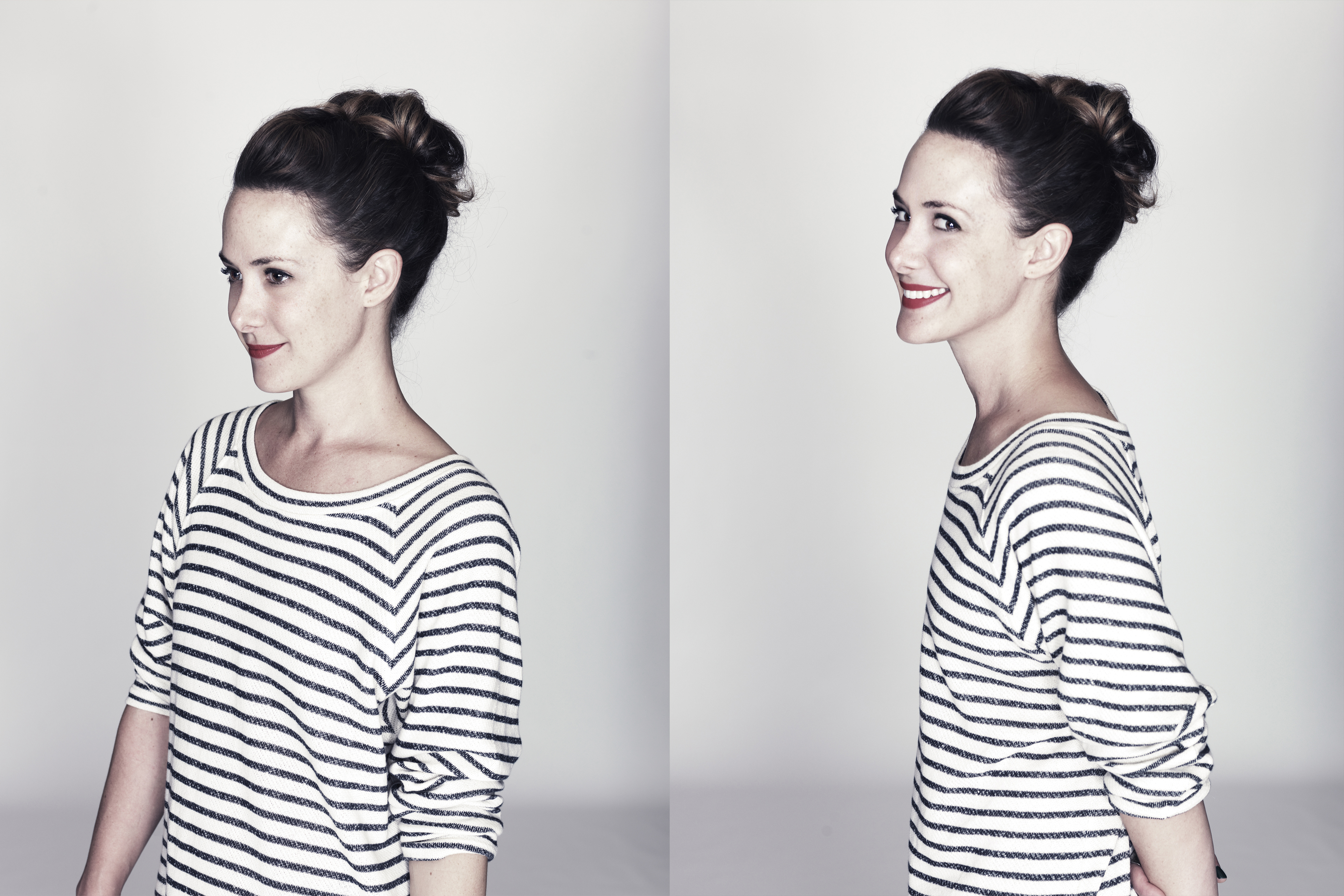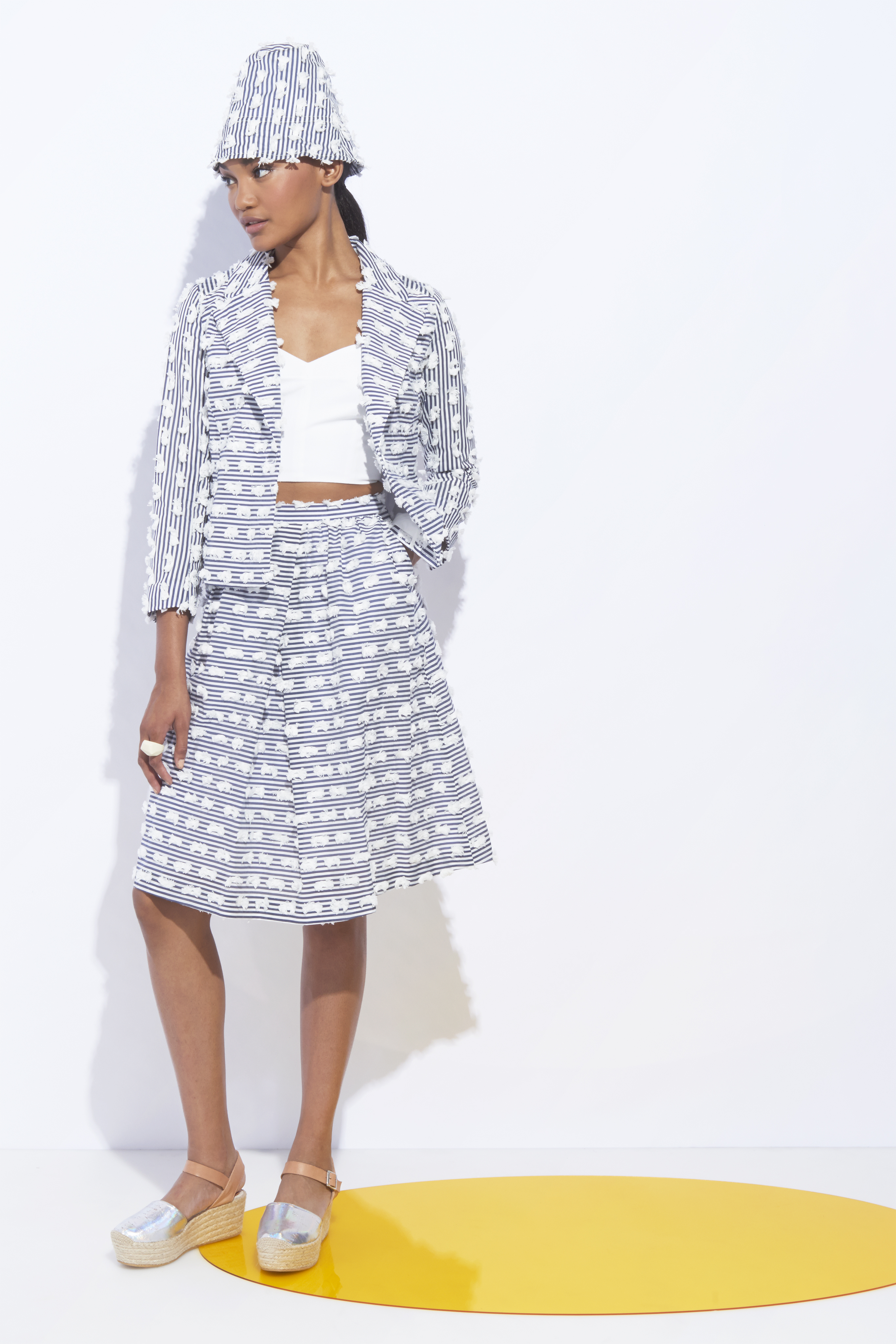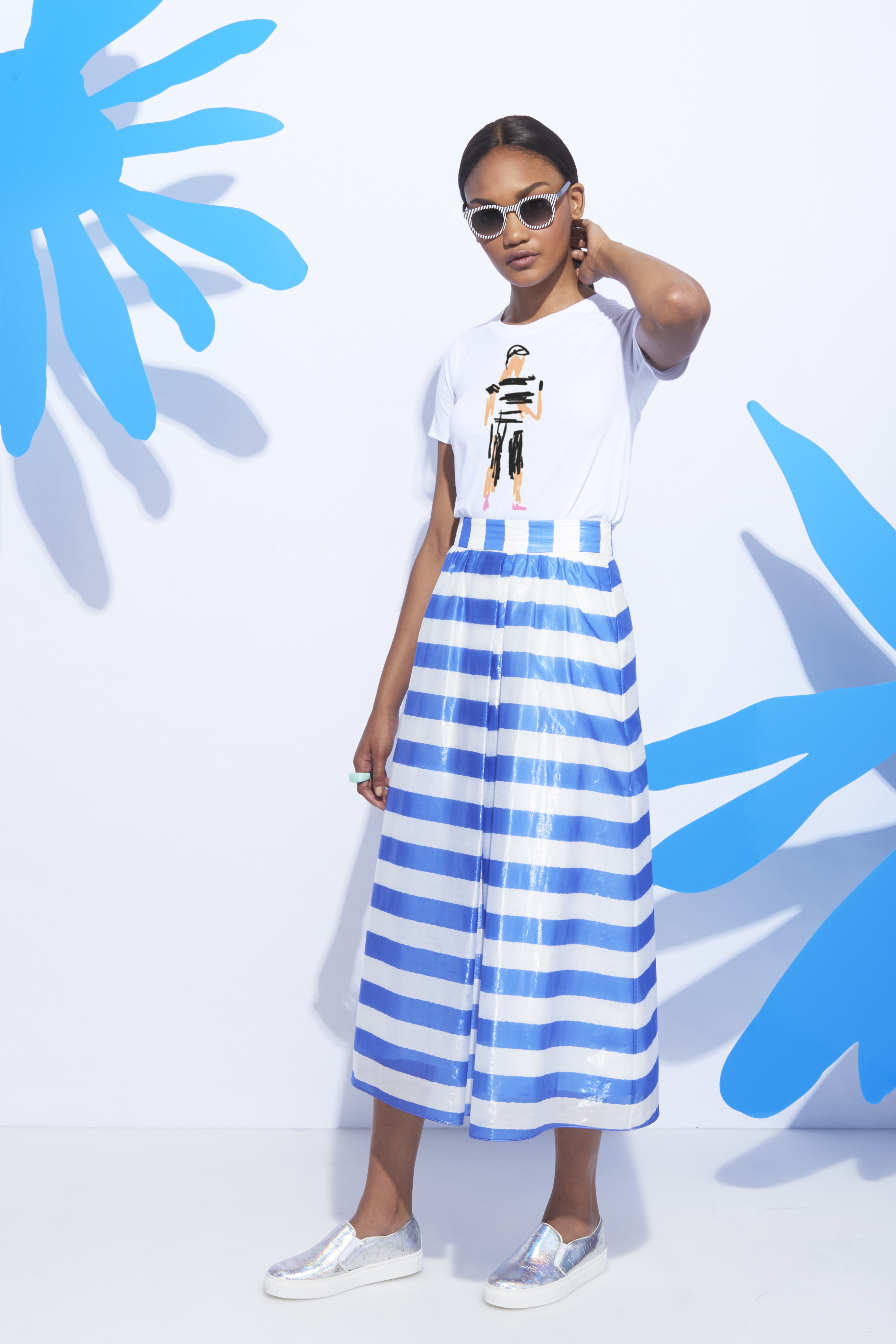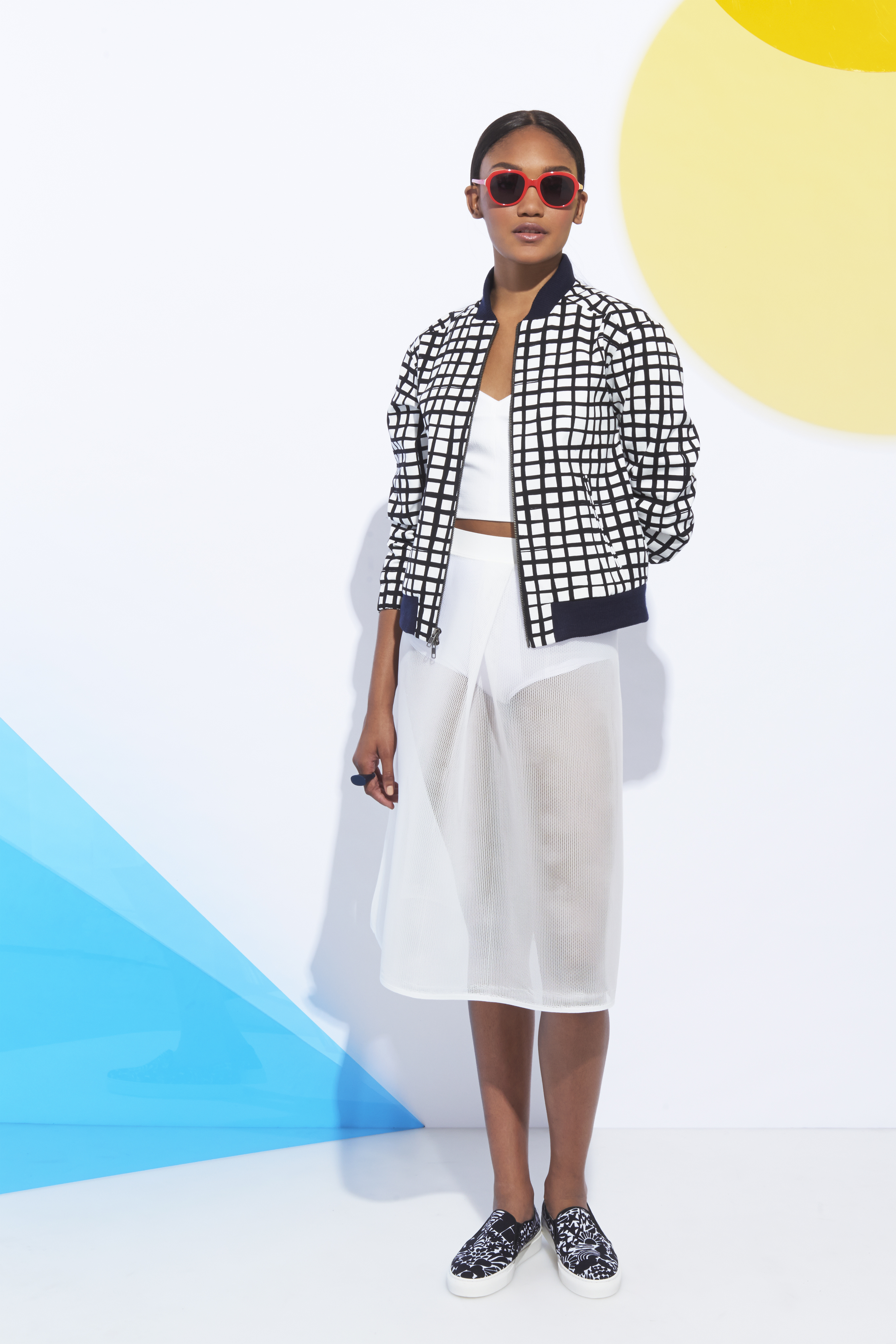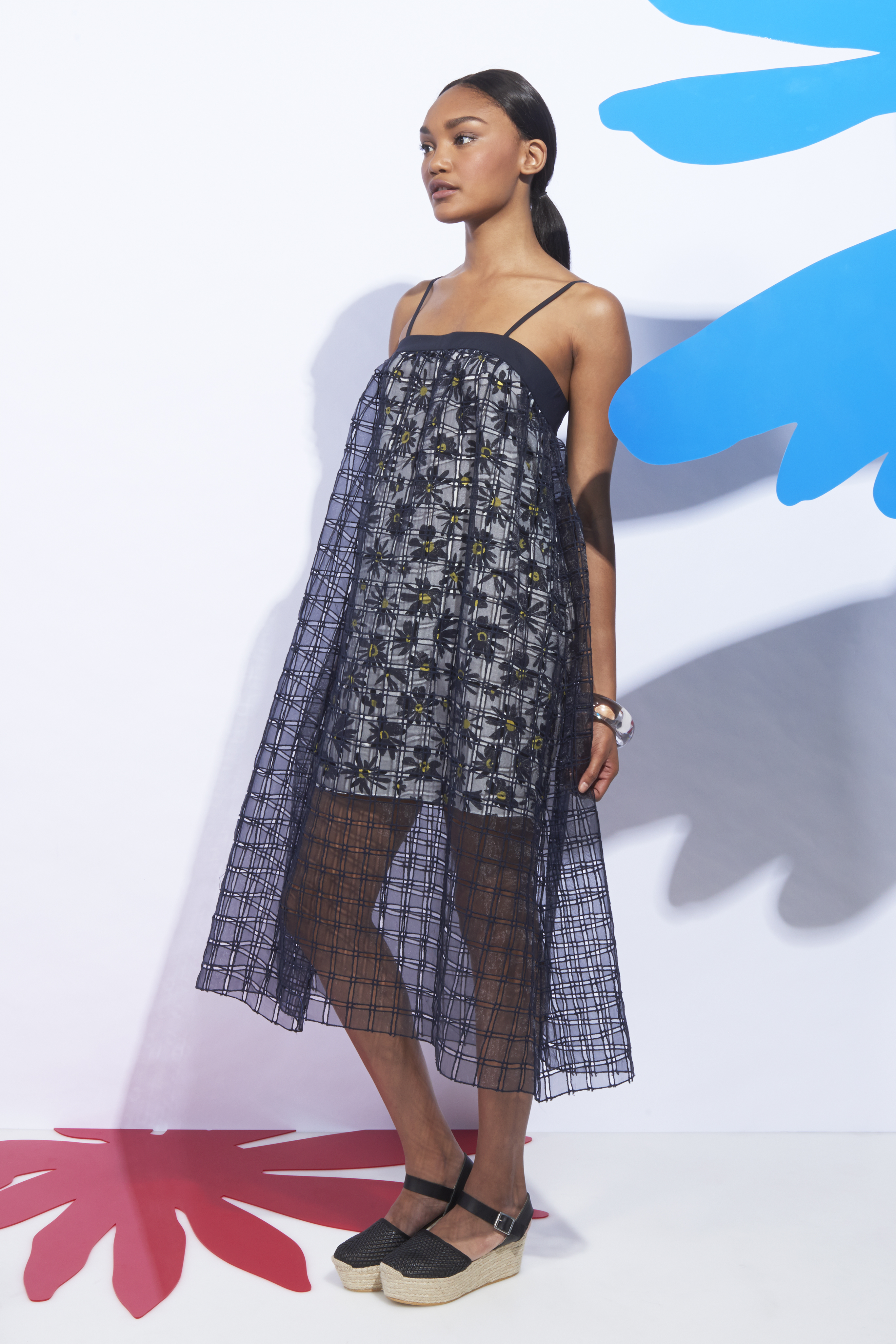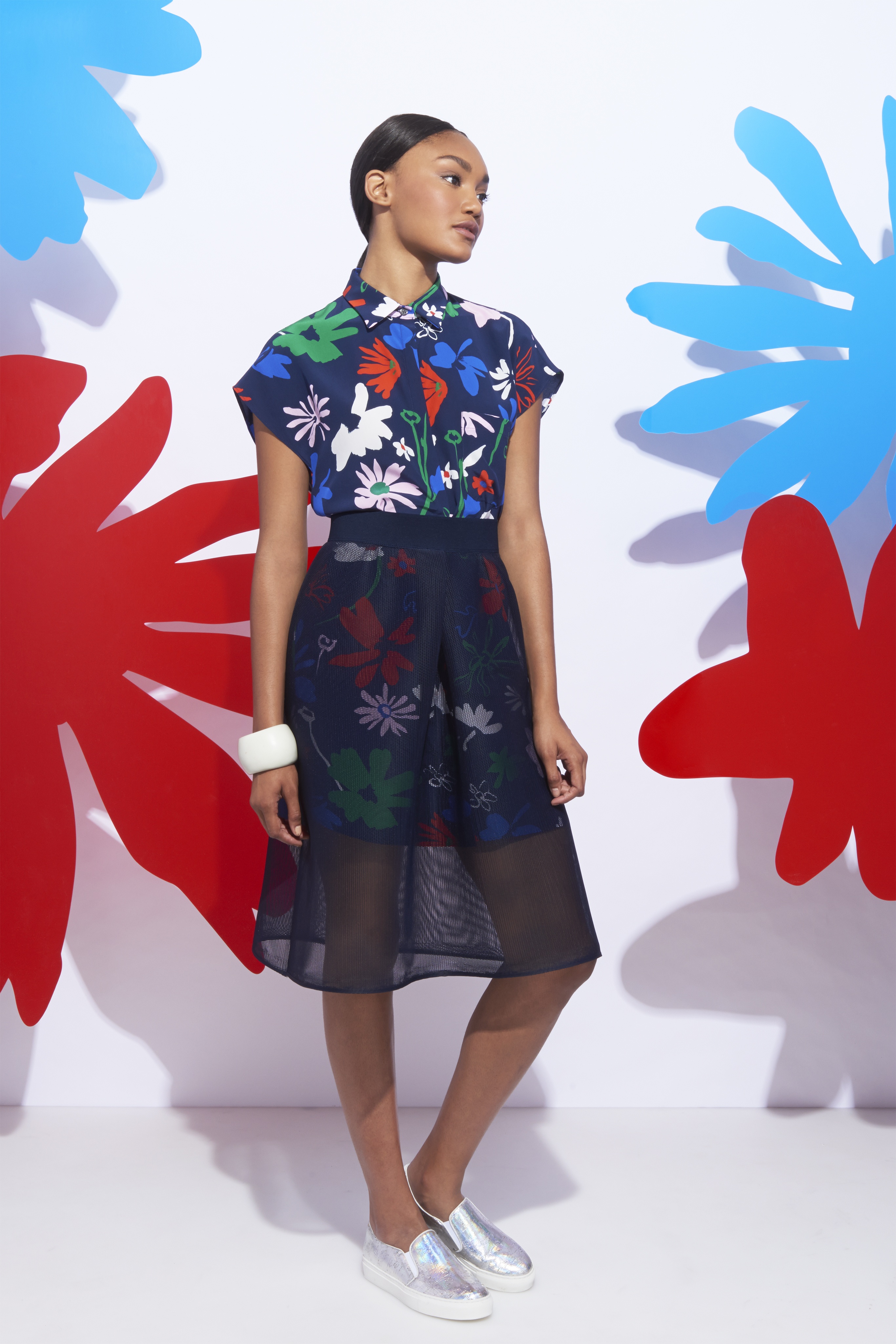“Made in US” means more than a clothing tag for Martha Stewart’s American Made winner.
by Kristina Bustos
In October, Martha Stewart announced the 2014 American Made Awards, an annual recognition of designers and craftsmen who makes products solely using American resources. One of the winners was Whitney Pozgay, who took home the Style Award for her contemporary womenswear brand WHIT.
Pozgay isnʼt just an “American Made” entrepreneur; the Arizona-bred designer also comes from a stylish American pedigree. Her aunt is Kate Spade, who founded her own namesake brand that is now one of the ultimate all-American lifestyle companies. Pozgay worked for Spade while studying at New York’s Parsons The New School for Design and the Fashion Institute of Technology. She then moved on to helm Steven Alan’s womenswear line before launching WHIT with partners Parker Argote, Zach Cooper, and Zonda Sochorow.
“She is a great editor and was good about staying true to her aesthetic and message,” Pozgay shares about what she learned from Spade. “It is a good reminder when I feel pressure to add categories or [am] encouraged to do something that isn’t ‘on brand’ for us. It is important to have a strong vision and stick with it. That doesn’t mean it can’t evolve, but it is important to stay on message.”
While Pozgay has kept up with the whimsical feminine aesthetic of WHIT since its fall 2010 debut, each collection has gotten bolder. Inspired by Scandinavian culture, Pozgay’s latest fall 2014 offering is playfully artsy with a downtown edge—the leather LBD, the psychedelic green jumpsuit, and the standout piece, a blue-brown combo printed short dress with an elegant cape. For her spring RTW 2015 collection (seen below), Pozgay continues her love for prints and patterns, but this time she incorporated original work from four artists (Jill Galarneau, Gordon Holden, Amanda Jasnowski, and Mary Matson) throughout her pieces.
And it’s certainly inspiring to know that Pozgay is working closely with New York City’s Garment District to manufacture WHIT. To Pozgay, “American Made” is “conscientious, quality, and community”, and it’s the last one that the designer most embodies. The Garment District has been in decline over the past few decades due to rent spikes and companies outsourcing production, but Pozgay is one of the many American designers who is helping to revive the heartbeat of the once booming industry.
I connected with Pozgay via email to talk more about her partnership with the Garment District as well as what it’s like to be an “American Made” brand, and how Americans are changing the way they shop.
[slider navigation_style=”both” custom_slider_transition=”move”]
[slide]
[/slide]
[slide]
[/slide]
[slide]
[/slide]
[slide]
[/slide]
[slide]
[/slide]
[slide]
[/slider]
Kristina Bustos: Congratulations on being named a Martha Stewart American Made winner! What does this award mean for you as a designer?
Whitney Pozgay: We were honored to be chosen as a winner and we are always excited when there is an opportunity to bring attention to brands making their goods locally. Martha has a long-standing record of supporting local makers and craftsmen. It was really lovely to be included in the company of other creatives doing great things here in the States.
KB: What makes WHIT a worthy winner for the Style award?
WP: We had always set out to make a majority of our main line goods here in the US. This is easier when you are starting out, but we have managed to stick with this as we have grown over the years. We also work and collaborate with other American made brands and are happy to be a part of a community making product in New York City’s Garment District.
KB: Speaking of which, how has it been for you partnering up with the Garment District?
WP: Most of the vendors here are within a 5 block radius of our office. It is really nice to be that close to the factories and vendors. We have built strong relationships and some are almost family at this point. It is a nice community to be a part of.
KB: You’re already taking a proactive role in helping the garment community by having them manufacture WHIT. How else are you giving back to the industry?
WP: I am a big believer of paying it forward. So many of the people we work with took a chance on us and we have grown together. I try my best to recommend as many people as possible to our vendors in the hopes that they can continue to grow their businesses. I would love to see more brands move their production back here. I have been working with some organizations actively supporting the Garment District and am looking to get more involved in the near future.
KB: With so many fashion companies in the market manufacturing overseas, what made you want to work locally in Manhattan?
WP: Before launching WHIT, I worked for a brand making most of their goods in the US and really enjoyed being that close to the process.
I love being really hands on with production. I know every hand that touches the goods before they get out the door. If there is an issue or question, I can just pop over to the factory to solve the problem. I can keep a close eye on quality and construction and feel good about how things are being made.
KB: What are the advantages of having WHIT made in the US? Do you also run into any disadvantages?
WP: The biggest advantage is being well informed and involved. You can problem-solve faster, keep a close eye on every detail and have a close relationship with the sewers working on each garment. The disadvantage is that a lot of local production is not vertical, so it requires a lot of running around to different vendors working on specific parts of the construction. There is definitely more leg work and more organization required. Another disadvantage is cost. It is difficult to be competitive in the market, when the vast majority of competing contemporary brands are manufacturing overseas.
WP: Both of these markets are pretty well saturated at this point and I do think that with so many options, consumers are starting to educate themselves as to where and how things are made. While it is true that American made goods tend to be more expensive, there has been a shift towards quality over quantity when it comes to special items. People feel good about knowing things were made with care. In recent markets I have been happy to see more boutiques specializing in locally manufactured or fair trade goods.
KB: In 2013, you collaborated with Anthropologie for a collection geared towards petite-sized shoppers. They have their pieces manufactured outside the US. As a designer who make clothes locally, how do you choose the people or brands with whom you want to collaborate?
WP: We are still a small company trying to build brand recognition. Collaborating with Anthropologie gave us an opportunity to reach a different audience that was originally unfamiliar with the brand. While we are making that program with them overseas, the hope is that it garners attention for the main line as well, which is manufactured here. Additionally, some of the Anthro collection featured embroidery and dying techniques specific to India, so it made more sense to work with a vendor there. I was really excited to target a market with Anthro that was being underserved. There are not that many contemporary lines serving the petite customer and it was an exciting challenge to give them items that were not available in the market.
KB: What do you hope to accomplish with WHIT in how Americans buy their fashion?
WP: New York once had a thriving garment district and it has really been suffering in recent years. We hope to continue to make goods in New York and educate buyers on the value in that. I really hope that more brands are encouraged to keep their production local and bring some of the industry back to the states.
KB: Finally, do you know any other brands made in the US you can suggest to our readers?
WP: In God We Trust, Caron Callahan, A Detacher, No. 6, and Mociun
[hr style=”striped”]
Kristina Bustos is a contributing writer for The Riveter and Digital Spy. She was an editor at fashion blog The Blay Report as well as a contributor for Honey, Essence, and Audrey magazines.You can follow her on Twitter and Instagram at @krisbustos.

